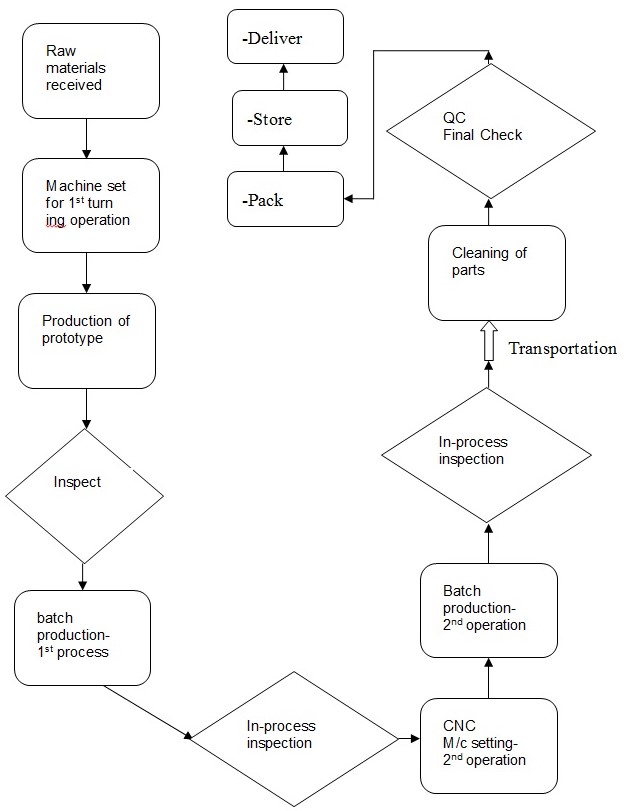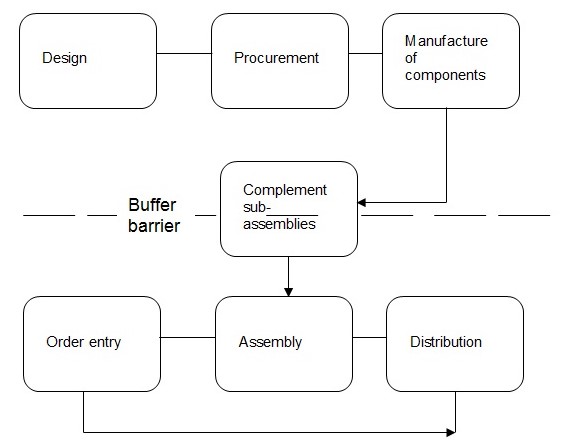Make-to-stock process
In this type of process flow, production is initiated before a customer makes an order, and goods are dispatched when the order is received. Traditional methods of production involved this type of practice but modern systems have shifted from it because of several disadvantages. One such disadvantage is that it is costly and impractical if the number of products is many. Again, the organization may suffer during low demand for the goods.
Make-to-order
Make-to-order has become a common trend where production of goods is initiated after an order for the same is received from the customer. This trend carries the advantages of having the possibility of eliminating finished inventories and reducing the financial risk of the firm. However, a company may suffer as a result of customer lead times and large order backlogs. A trend that allows the incorporation of advantages from the two is known as delayed differentiation and is a hybrid of the make-to-order and make-to-stock (Gupta & Saifallah, 2000).
Assemble-to-order
In this arrangement, the products are not assembled until the customer orders arrive, and its performance is largely determined by the capability to meet customers’ requirements in a fast-paced manner, and “achieving a level of scale economies” High product variety induced by the assemble-to-order supply chain leads to problems in its performance which can be solved through implementing various management strategies (Thorsten & Abdelkafi, 2006).
The use of internet-based Electronic Data Interchange (EDI) may help companies to reduce transaction costs, production time, and costs associated with to transfer of paperwork and material. The system allows the transmission of data through electronic means. The method of communication may involve the internet protocol, modem-to-modem, Value Added Network (VAN), and Bulletin Board Systems (BBS). Standards that allow embedding of EDI documents into XML have been embraced to allow usage of the internet (AS2-Applicable Statement 2) in this field. In addition to the delivery of information, companies may enjoy other services which include retransmitting documents, third-party audit information, and telecommunication support. These services are provided for example by VAN which in its basic form acts as a regional post office and avoid the bouncing back of the documents (“Electronic Data Interchange”, n.d.). The manufacturer can be linked to the customer who is making an order for the products before manufacturing in case of make-to-order and after for the case of make-to-stock. The companies can use EDI to accelerate production and make their goods within the short time possible to meet customer deadlines to which they may otherwise have not provided services because of strict deadlines. EDI can also assist manufacturers to source out information and expertise for example software and save transaction costs and costs related to time wastage. In addition, it is possible to use technology to acquire goods and to allow communication between trading partners.



References
“Electronic Data Interchange”. Exforsys. 2009. Web.
Gupta Diwakar and Saifallah Benjaafar. Make-to-order, Make-to-stock, or Delay Product Differentiation?-A Common Framework for Modeling and Analysis. 2000. Web.
Irwin/McGraw-Hill. “Process Flow Charts for Making Hamburgers”. 2009. Web.
Thorsten Blecker, and Abdelkafi, Nizar. “Variety Management in Assemble-to-Order Supply Chains”. An Abstract. 2006. Web.